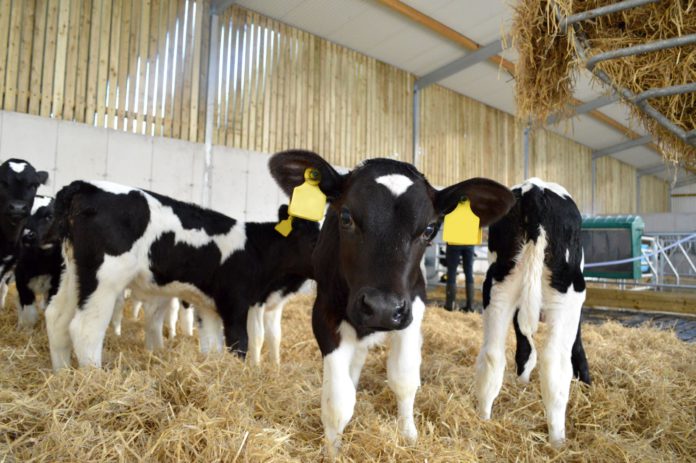Excellent calf welfare arises from good nutrition (Calf 1-6 Rule), excellent husbandry skills, a high health status and appropriate housing, a Teagasc researcher told farmers at an event earlier this week.
At Teagasc’s dairy conference, Dr Emer Kennedy, shared findings from a paper on management and housing guidelines to achieve excellent calf welfare, which she co-authored with Alison Sinnott.
She informed farmers about the Calf 1 to 6 rule, which incorporates the 1-3 rule that many would be familiar with and highlighted the importance of adhering to it in the calf’s first week of life.
- 1st milking – Only feed calves high-quality colostrum – only milking that will have enough antibodies to kick-start immunity as a calf is born with an undeveloped immune system. Test to determine quality – first milking >22% on Brix refractometer;
- Feed within 2 hours of birth – There is maximum absorption of antibodies from colostrum within this window. By 24 hours of age, calves can no longer absorb antibodies. Antibodies give a peak in passive immunity at 24 hours after the first feed. Antibodies from colostrum protect calves until their own immune systems are fully functional. Time between passive immunity provided by colostrum and the calf’s own immunity creates a period where the calf is at the greatest risk of illness. Therefore, during this time, avoid mixing/moving calves in the high-risk period;
- Feed 3 litres, at least, of high-quality colostrum;
- 4 feeds of transition milk (milkings 2-6 produced by the cow): Following the first feed of colostrum, a calf should get at least 4 more feeds of transition milk. Studies show fewer signs of poor health – runny noses, runny eyes and droopy ears – when transition milk is fed. If you are vaccinating for rotavirus and coronavirus, you need to feed transition milk to get maximum out of vaccine;
- 5 litres of transition milk per day across two feeds;
- Feed 6 litres of high-quality whole milk or milk replacer – By one-week-old, offer 6 litres of milk – either high quality (not waste) milk or milk replacer (23-26% crude protein, 16-20% fat/oil, <0.15% fibre and <8.5% ash) across two feeds. If figures for fibre and ash are close to those above, it is generally indicative of a poor-quality product and one that can cause more digestive upsets.





